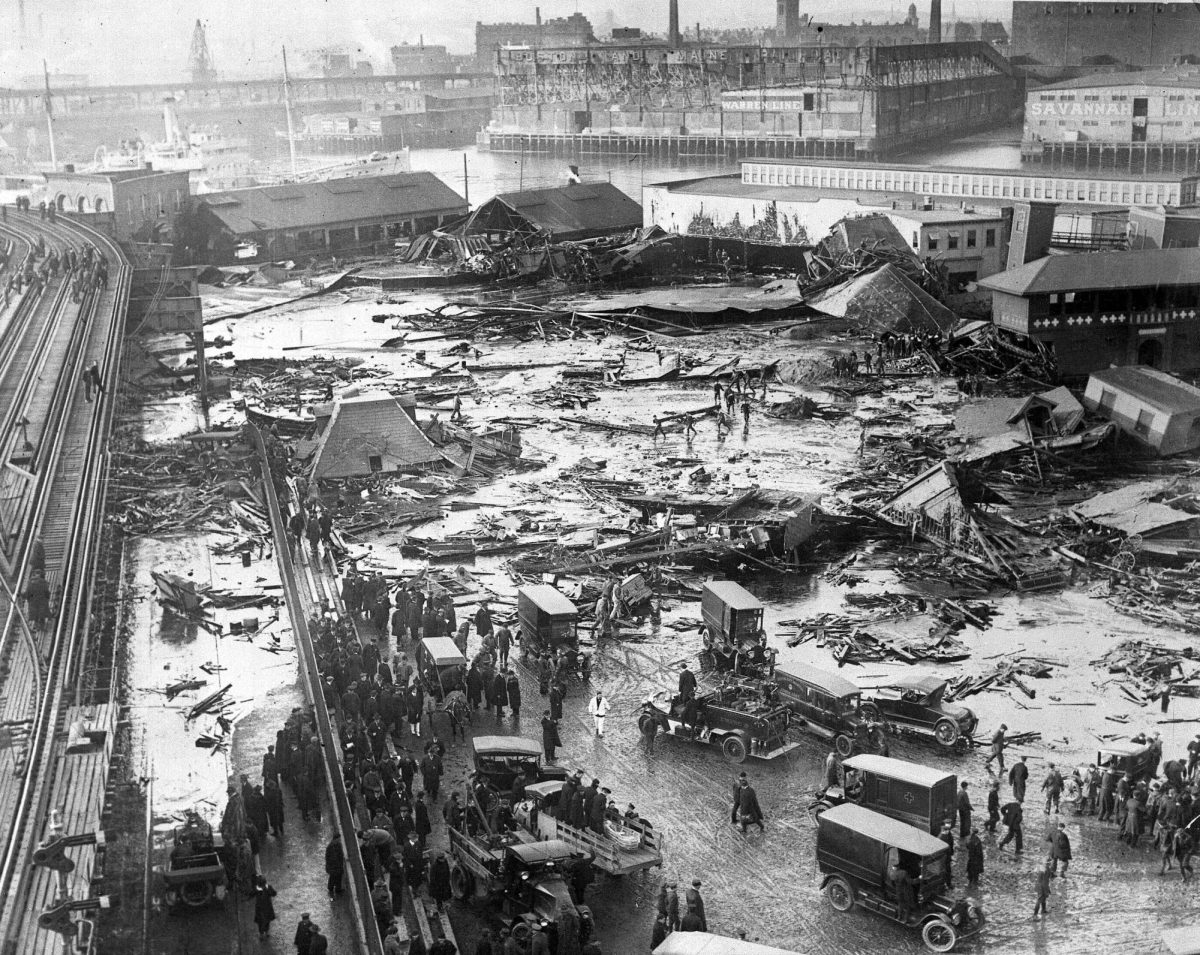It was a typical day on January 15, 1919, in Boston Massachusetts. Citizens went about their day as normal. Suddenly, around 12:40 p.m. a loud noise was heard and 2.3 million gallons of molasses flooded down the streets. The giant wave traveled at about 35 miles per hour, destroying everything in its path. Buildings crumpled as though made of cardboard. Steel poles were bent in half. People were trapped in the sticky flood. Even though it only lasted a few moments, it wreaked havoc that would last for years. How did this happen?
Well, during World War I, the demand for industrial alcohol increased greatly. The United States Industrial Alcohol company, or USIA, quickly built a storing tank for the molasses used to sweeten the beverage. It didn’t take long for people to take notice of the questionable safety of the tank. Being made of thin metal, it wasn’t uncommon to see sheets of metal peeling, leaking molasses into the streets. Eventually though, citizens became used to the sight and the creaking of its metal, that is, until it ruptured.
It didn’t take long for people to respond after the wave subsided. As they slowly waded through the molasses, they kept their eyes out for any moving shape. Everything was coated in the sticky substance, making it impossible to distinguish whether the shape was human or beast. It didn’t take long for the 40 degree weather to start solidifying the syrup, making it harder to rescue the others still alive. First-responders started resorting to chain-saws and pick-axes to get into buildings.
The number of dead eventually settled to 21, with 150 others injured. After a long battle against the USIA, victims and their families would receive $628,000, equivalent to $8 million today.
Learning about the Great Molasses Flood helps us to remember that unseemingly things can be more dangerous than they appear to be. It also reminds us to stand up for when things appear to be wrong to keep things from snowballing, and possibly saving lives.













